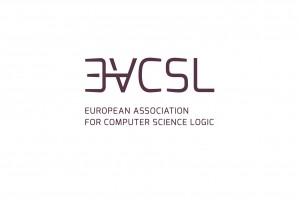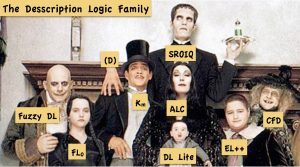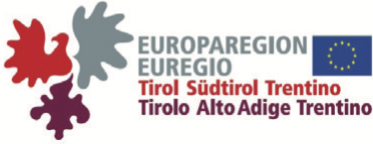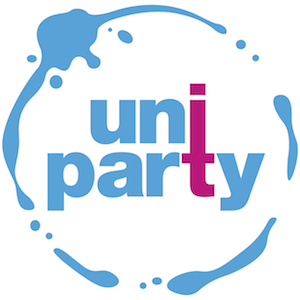Emar Maier
- Area: LaLo
- Level: I
- Week: 2
- Time: 14:00 – 15:30
- Room: C2.01
Abstract
We use language to talk about individuals, events, times, states of affairs, and possibilities, but we can also use it to talk about words, letters, sentences and utterances. In both formal and natural languages we find quotational devices dedicated to the latter function, i.e. using language to refer to linguistic entities.
Quotation is, however, not a unitary phenomenon. In addition to so-called pure quotation (“cat” has three letters), there is a family of related linguistic phenomena, all associated with quotation marks and/or metalinguistic reference of some kind. In this course I give an introduction to the semantics of quotational constructions in natural language.
After a broad, philosophically oriented overview of the various forms of quotation, I discuss in detail the semantics of pure quotation, direct and indirect discourse, and mixed quotation. Along the way we’ll discuss current debates involving “monsters”, Free Indirect Discourse (in literary narrative) and Role Shift (in signed languages).
The course will be accessible to most if not all ESSLLI participants. More specifically, prerequisites are some minimal familiarity with basic formal semantics, whether from linguistics, logic, or philosophy of language.
Outline
Lecture I: Pure Quotation
I survey the different forms of quotation before zooming in on pure quotation. I review the classic philosophical analyses (e.g. Quine 1940; Tarski 1933; Davidson 1979; Cappelen and Lepore 1997; Clark and Gerrig 1990), focusing specifically on issues related to the (non-)compositionality of pure quotation (Maier, 2014b).
Lecture 2: Direct and Indirect Discourse
I introduce the direct – indirect distinction in reported speech. I explore analyses of direct discourse as pure quotation, and of indirect discourse as an intensional operator (Kaplan, 1989; Zimmermann, 1991).
Lecture 3: Between Direct and Indirect Discourse
I discuss quotational phenomena that don’t fit within a rigid direct–indirect dichotomy. I focus on two that are currently hotly debated in formal semantics: the literary style known as Free Indirect Discourse (Banfield, 1982; Schlenker, 2004; Sharvit, 2008; Eckardt, 2014), and the modality specific form of reporting in signed languages known as Role Shift (Quer, 2005; Schlenker, 2014; Davidson, 2015). I’ll compare attempts at assimilating these phenomena into direct discourse, and into indirect discourse (using context shifting operators in extensions of Kaplan’s logic).
Lecture 4: Mixed Quotation
Mixed quotation combines aspects of direct discourse/mention and indirect discourse/use. I compare the main views in the ongoing debate about the semantics of this construction, including the current state of the art (Geurts and Maier, 2005; Potts, 2007; Shan, 2011; Maier, 2014a).
Lecture 5: Unquotation
I introduce the dual of mixed quotation, unquotation, in order to capture some remaining puzzles of mixed quotation. I then consider the possibility of extending the semantics of mixed quotation and unquotation to account for the phenomena discussed in Lecture 3, i.e. Free Indirect Discourse and Role Shift (Maier, 2015). Finally, I consider the relation between unquotation and so-called quotational indefinites (Sudo, 2013; Koev, 2015).
References
Banfield, A. (1982). Unspeakable Sentences: Narration and Representation in the Language of Fiction. London: Routledge & Kegan Paul.
Cappelen, H. and E. Lepore (1997). Varieties of quotation. Mind 106(423), 429–450.
Clark, H. and R. Gerrig (1990). Quotations as Demonstrations. Language 66(4), 764–805.
Davidson, D. (1979). Quotation. Theory and Decision 11(1), 27–40.
Davidson, K. (2015). Quotation, Demonstration, and Iconicity. Linguistics and Philosophy, (to appear).
Eckardt, R. (2014). The Semantics of Free Indirect Speech. How Texts Let You Read Minds and Eavesdrop. Leiden: Brill.
Geurts, B. and E. Maier (2005). Quotation in Context. Belgian Journal of Linguistics 17(1), 109–128.
Kaplan, D. (1989). Demonstratives. In J. Almog, J. Perry, and H. Wettstein (Eds.), Themes from Kaplan, pp. 481–614. New York: Oxford University Press.
Koev, T. (2015). Quotational Indefinites. pp. 1–31. Ms.
Maier, E. (2014a). Mixed quotation: The grammar of apparently transparent opacity. Semantics and Pragmatics 7(7), 1–67.
Maier, E. (2014b). Pure Quotation. Philosophy Compass 9(9), 615–630.
Maier, E. (2015). Quotation and Unquotation in Free Indirect Discourse. Mind and Language 30(3), 235–273.
Potts, C. (2007). The Dimensions of Quotation. In C. Barker and P. Jacobson (Eds.), Direct Compositionality, pp. 405–431. New York: Oxford University Press.
Quer, J. (2005). Context shift and indexical variables in sign languages. Semantics and Linguistic Theory (SALT) 15, 152–168.
Quine, W. V. O. (1940). Mathematical Logic. Cambridge: Harvard University Press.
Schlenker, P. (2004). Context of thought and context of utterance: a note on Free Indirect Discourse and the Historical Present. Mind and Language 19(3), 279–304.
Schlenker, P. (2014). Super Monsters I: Attitude and Action Role Shift in Sign Language. ling.auf.net, 1–47.
Shan, C.-c. (2011). The character of quotation. Linguistics and Philosophy 33(5), 417–443.
Sharvit, Y. (2008). The puzzle of free indirect discourse. Linguistics and Philosophy 31(3), 353–395.
Sudo, Y. (2013). Metalinguistic Quantification: Evidence from Japanese Wh-doublets. pp. Ms. Paris.
Tarski, A. (1933). The concept of truth in formalized languages. In J. Corcoran (Ed.), Logic, Semantics, Metamathematics, pp. 152–278. Indianapolis: Hackett.
Zimmermann, T. E. (1991). Kontextabhängigkeit. In A. von Stechow and D. Wunderlich (Eds.), Semantik: Ein internationales Handbuch der zeitgenössischen Forschung, pp. 156–229. Berlin/New York: Walter de Gruyter.
















